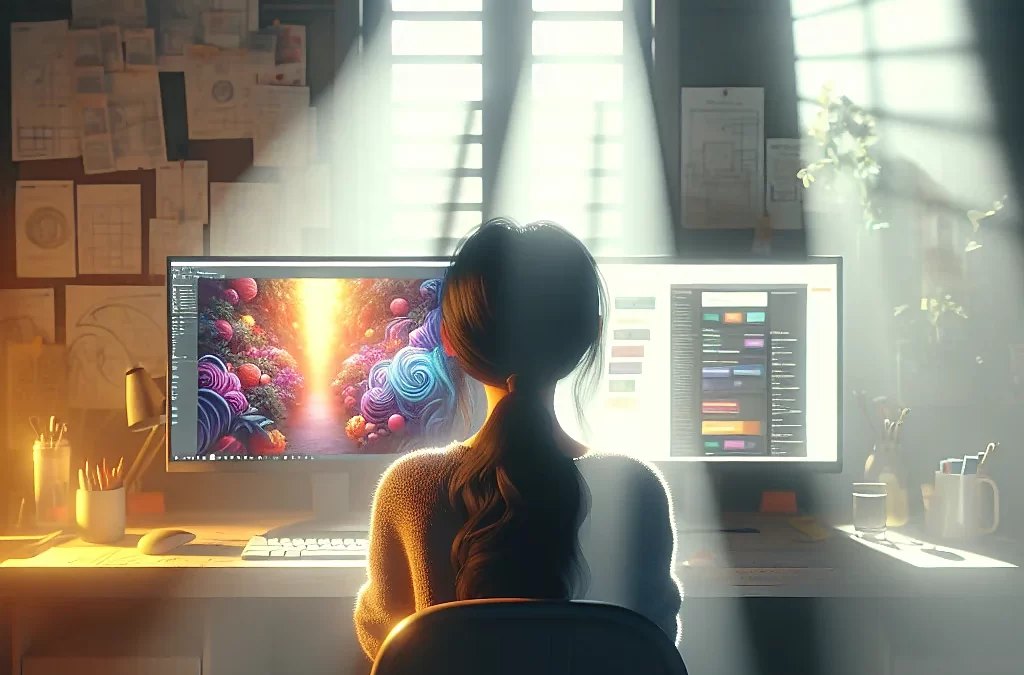Chasing Design Perfection vs. Creating Real Impact
I Used to Open Dribbble Like It Was Scripture
Smooth gradients. Glassy buttons. Delicate motion effects.
Everyone seemed to be creating these mesmerizing digital experiences—somewhere between a website and a dream.
I’d scroll for hours, not entirely sure if I was studying, comparing, or just slowly suffocating under the weight of design perfection.
Whatever it was, I rarely walked away feeling better.
The Truth? I Haven’t Mastered Every Trend
Not even close.
I’m still learning how to make things “float,” how to finesse those subtle shadows, how to animate without overdoing it.
Sometimes I still mess up padding. Sometimes a layout just… fights me.
But something interesting started happening as I got more feedback—not from other designers, but from users and clients.
Not feedback like:
“Love that neumorphic hover state,”
or
“That micro-animation blew my mind.”
Instead, it was things like:
- “Oh! I found it right away.”
- “That was easy.”
- “Thanks—I didn’t have to search all over.”
That Feedback Changed Everything
At first, it felt underwhelming.
Wasn’t I supposed to be getting praise for innovation? For creativity? For wow?
But the more I heard it, the more I realized something important:
I was chasing aesthetic validation, not usability. Designing to be admired—not understood.
Honest Reflection Hurts (But It Helps)
It’s vulnerable to admit, but a big part of me was designing for other designers.
I wanted the nods, the likes, the approval.
I wanted to prove I belonged.
But when I looked at the projects that actually worked—the ones that converted, that users didn’t bounce from—they shared a common thread:
They were simple.
Not boring.
Not lazy.
Just… considerate.
One of My Most Honest Projects
I remember working with a small local service provider.
No brand assets.
No fancy copy.
No polished headshots.
They just wanted one thing:
“Help people understand what we do, trust us, and get in touch.”
So I kept it clean:
- Three main pages
- Clear CTA
- Big, tappable buttons
- Mobile-first layout
And guess what?
📈 Calls went up.
⭐️ Reviews mentioned how easy the site was to use.
No parallax.
No sticky headers.
No kinetic text.
And yet—it felt like some of my most honest work.
Good Design Doesn’t Always Get Applause
Sometimes “good” design is quiet.
It doesn’t scream.
It just helps.
Which means you don’t always get praise, but the client gets results.
The user gets clarity.
The business gets what it needs.
That’s not failure.
That’s respect.
I Still Struggle
Even now, I scroll social media and feel it:
“You’re behind.”
“You’re basic.”
“You’re not evolving.”
And sometimes, that voice isn’t wrong.
I am behind on some things.
I don’t always know the latest layout technique.
I still lean on symmetry when maybe I should experiment more.
But here’s what I do know:
If someone finds what they need in just a few clicks, that’s not a lack of skill.
That’s a small act of care.
Simplicity Takes Courage
It’s hard to build something that doesn’t scream for attention.
You have to:
- Fight your ego
- Resist the urge for “just one more flourish”
- Let go of design as performance
But I’ve learned this:
🧭 Clarity is underrated—in design, and in life.
What I Believe Now
We spend so much energy trying to prove what we know.
But sometimes, the most powerful thing is making someone else feel like they know what to do.
Not because of a flashy animation.
Not because of a cutting-edge layout.
But because the design helped them quietly.
So no, I haven’t mastered every trend.
Maybe I never will.
But I know how to build something that works.
That helps someone book an appointment, find a product, submit a form, or send a message.
And That’s Enough
On days when I feel like I’m behind…
When I want to scrap everything and start over…
I remind myself:
Usefulness is a design value too.
It’s not shiny.
It’s not sexy.
But it’s real.
And I’m still learning to see the beauty in that.
Even if no one claps.

